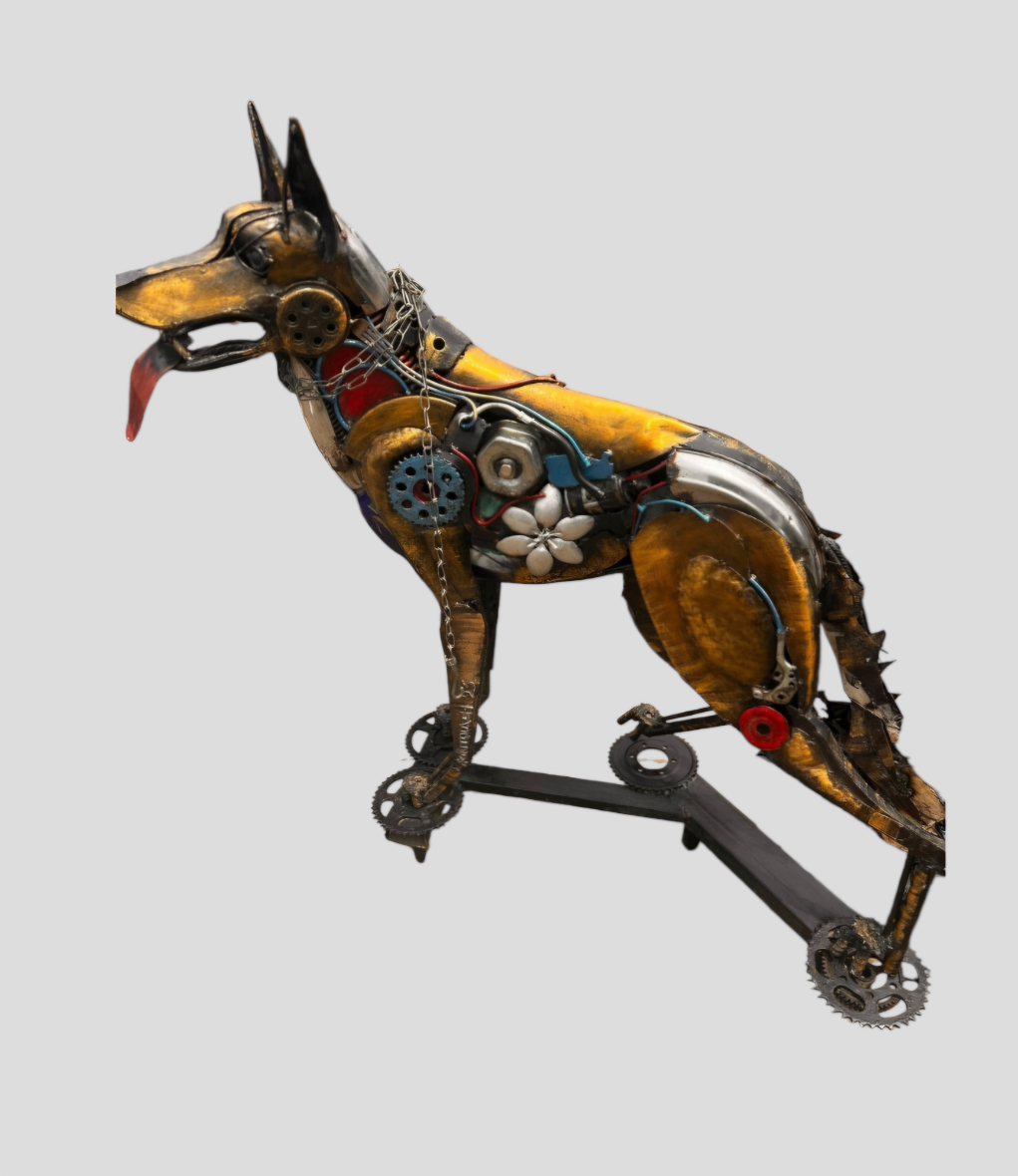
Akintola Hezekiah's
Akintola
Hezekiah's
work
embodies
a
contemporary
approach
to
both
aesthetics
and
sustainability,
emphasizing
the
transformation
of
discarded
materials
into
expressive
sculptures.
This
specific
piece,
a
mechanical
dog
sculpture,
reflects
several
key
aspects
of
his
style
and
artistic
philosophy:
Hezekiah’s
choice
to
use
junk
metal
and
gears
illustrates
his
commitment
to
environmental
consciousness.
His
work
aligns
with
the
concept
of
upcycling,
giving
new
life
to
industrial
waste,
conveying
the
message
that
beauty
and
value
can
emerge
from
what
society
discards.
Hezekiah's
has
a
fondness
for
sculpting
animals,
as
seen
in
this
piece.
The
mechanical
and
industrial
elements
suggest
a
fusion
of
technology
with
organic
life,
symbolizing
the
increasingly
blurred
boundaries
between
the
natural
world
and
human-made
environments.
This
dog
sculpture,
with
its
gears
and
wheels,
might
represent
loyalty
and
service
in
a
modern,
mechanized
society.
The
use
of
gears,
chains,
and
machine
parts
suggests
motion,
interconnectedness,
and
energy.
These
materials
convey
a
sense
of
dynamism,
implying
that
even
inanimate
objects
have
stories
to
tell
and
energy
to
offer.
It
also
draws
attention
to
the
potential
harmony
between
art,
mechanics,
and
nature.
Coming
from
Lagos,
a
bustling
urban
environment,
Hezekiah
is
deeply
inspired
by
the
intersection
of
urbanity
and
nature.
His
works
are
emotionally
resonant,
often
evoking
themes
of
resilience
and
adaptation—qualities
found
in
both
city
life
and
in
this
hybrid
depiction
of
a
mechanical
animal.
Technology
is
a
prominent
influence
in
his
art,
as
reflected
in
the
robotic,
industrial
feel
of
this
sculpture.
Furthermore,
Hezekiah
often
explores
music
and
emotional
expression
in
his
work.
If
viewed
through
that
lens,
this
piece
could
symbolize
rhythm
and
movement—much
like
a
machine
or
a
musical
beat
that
never
stops.
For more information please fill out the form below.
(*) - Required field

